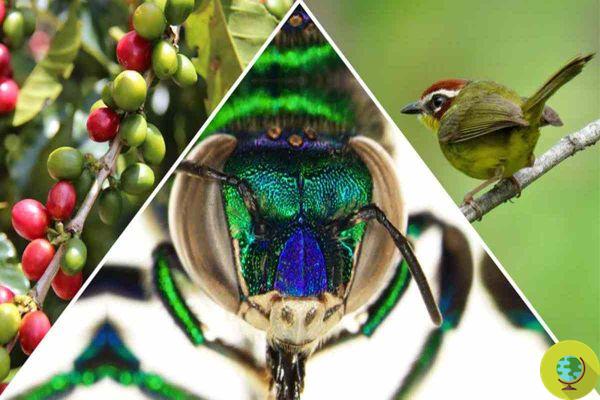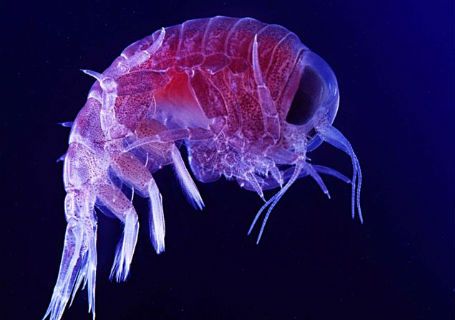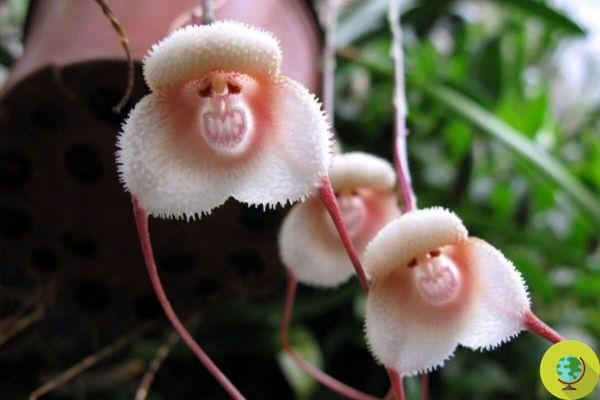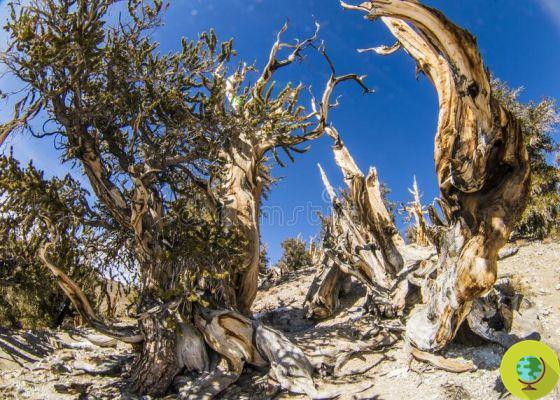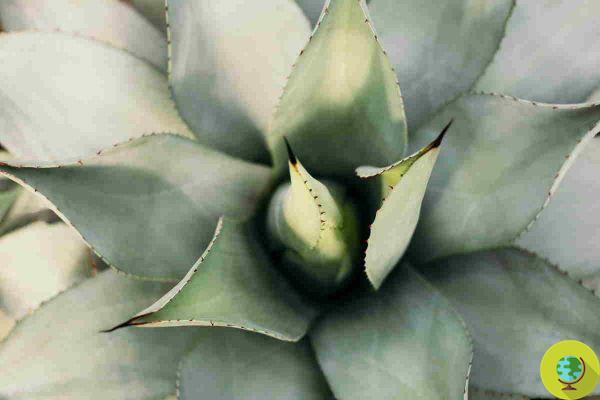
Many ornamental plants, and therefore not only wild herbs, can be toxic (sometimes even lethal) if touched or ingested.
He is about to end up run over, his mother saves himThey embellish our apartments and our gardens and, often, are placed in the squares of the cities: many ornamental plants, and therefore not only spontaneous herbs, can result toxic (sometimes even fatal), if touched or swallowed. In some cases they can be dangerous even for the simple inhalation of the perfume they emanate. So what are the ornamental plants to stay away from? And why?
Few know, in fact, the risk of reactions related to the contact of the skin or mucous membranes with plants, even of the very popular ones, such as oleander, for example, or Dieffenbachia. It is also likely that if some cause reactions of the skin and mucous membranes, others are capable of causing phytophotodermatosis: in this case, the areas of skin exposed to the plant and then to the sun can become excessively red and swell painfully (this is the case of Aloe ).
In general, to avoid itching, hives and overreactions in case of sun exposure, it is always better to wear gloves and cover clothing when we decide to take care of our plants. This avoids direct contact with the sap, stem or leaves. Also, remember to always wash your hands after contact.
Yes, but why can some ornamental plants be toxic?
Because some of them can produce harmful substances such as alkaloids, but also glucosides, resins, volatile oils and also tannic acid (mixture of different glucose derivatives of gallic acid which is found as a glucoside in oak galls), oxalic acid (whose potassium salt causes caustication of the gastric wall, vomiting, spasms tetanus, albuminuria, uremia, anuria, etc.), toxialbumin (toxic water-soluble proteins), selenium (non-metallic element that can act as an enzymatic poison), which have poisonous potential.
But beware: the toxicity of a plant species and therefore its danger to man is extremely variable, because it changes according to the age of the plant itself, the nature of the soil, the climatic conditions in which the plant lives, but also our own health conditions.
Here are the most toxic plants, according to a brochure offered by the Ministry of Health:
Index
Anemone
(coronary anemones)
From the characteristic blue, red or white calyx of the flower. It is widespread in the woods in mountainous and submontane areas in Europe, Asia, North America.
The possible ingestion of the plant - the whole plant can be harmful - it can cause inflammation of the digestive system and kidneys, cramps, unconsciousness, death from respiratory failure:
By contact: vesicles and ulcers.
Agave
(Agave Uthaensis)
It is often found in the gardens of Mediterranean coastal towns. Its harmful part are the leaves, large and fleshy, which for contact they can cause erythema, itching and blisters.
Holly
(Ilex aquifolium)
With a smooth, greyish bark, with oval and shiny evergreen leaves, with thorns, white flowers and red rod-shaped fruits, holly is found in mountain or submontane woods, especially chestnut and oak trees.
ingestion it can lead to nausea, vomiting, diarrhea, abdominal cramps and dehydration.
Read also: Holly: how to grow and take care of the butcher's broom, the symbolic plant of Christmas
CICLAMINO
(Cyclamen europeaum)
It is a herbaceous, perennial plant with tuberous root, heart-shaped evergreen and silver-spotted leaves, corolla of various shades of lilac with five long upward-facing petals, with a delicate scent. It grows in thickets or sparse broad-leaved woods and on stony soils rich in calcium.
Harmful part is the whole plant.
ingestion it can cause nausea, vomiting, diarrhea, abdominal cramps, dehydration, hemolysis of red blood cells and paralysis of the respiratory centers.
Read also: Cyclamen have withered, what to do and how to treat the plant and bulb after flowering
Dieffenbachia
(Dieffenbachia maculata)
It is a plant that can grow up to 2 meters in height, with oblong green or spotted leaves with large cream-colored streaks. The possibly harmful part are the leaves and the sap.
contact it can cause edema of the mucous membranes of the mouth and throat and dysphagia.
Ivy
(ivy helix)
It is considered a symbol of love and friendship, but not everyone knows that this beautiful evergreen creeper can lead to some annoyances, such as:
per contact: skin irritation
per ingestion: nausea and vomiting up to cardiorespiratory depression
In any case, the harmful part is the berries, but also all parts of the plant.
Read also: Ivy: how to grow it in the garden
Hellebore (Christmas Rose)
(Helleborus niger)
It is an evergreen with long stemmed leaves. The harmful part is the root and can cause:
per contact: skin ulcers
per ingestion: drooling, nausea, vomiting, diarrhea, arrhythmia, convulsions, collapse
Philodendron
(Philodendron perforatum)
If on the one hand it has excellent pharmacological properties (against rheumatism, in fact, the decoction of all parts of the plant is exceptional), on the other, not everyone knows that philodendron can cause erythema or widespread itching if touched.
Read also: Easy to grow houseplants: philodendron or Monstera deliciosa
Broom
(Spartium Junceum)
Shrub so dear to Leopardi, with flexible fronds poor in leaves and bright yellow flowers, found mainly on arid slopes and rocky coasts. The whole plant can be harmful.
ingestion it can cause vomiting, diarrhea, dyspnoea or respiratory failure.
Cherry laurel
(Prunus laurocerasus)
It is a large bush with shiny evergreen leaves and small white flowers in erect, very dense clusters. It is widespread in beech woods, while in parks it is used for hedges and espaliers. The harmful part is the leaves and seeds.
ingestion (of leaves or seeds) can cause bitter almond smell in the breath, vomiting, convulsions, unconsciousness, dyspnoea, respiratory paralysis.
Thrush
(Callaria Majalis)
It is a perennial herbaceous plant, with lanceolate elliptical leaves with long petioles, white and fragrant bell-shaped pendulous flowers and spherical red berries. It is found in deciduous forests (oak and beech).
ingestion (the whole plant is harmful) it can lead to nausea, vomiting, diarrhea, cardiovascular collapse.
Read also: White flowers: meaning and the 20 most beautiful varieties
Narciso
(Narcissus pseudonrcissus)
Perennial herbaceous plant found in mountain meadows and scrublands.
The potentially harmful part is the bulb and, for ingestion, can cause irritation of the gastric mucosa, nausea, vomiting, abdominal pain, bradycardia or hypotension.
Read also: Narcissus: how to cultivate and when to plant the "flower of selfishness"
Oleander
(Nerium oleander)
How many of them we find on our streets! It is an evergreen shrub, with lanceolate leaves and flowers ranging from white to yellow and pink to red.
The harmful part is the leaves, and for contact they can cause erythema, itching and for ingestion: vomiting, diarrhea, arrhythmia, hypotension, dehydration, mydriasis, arrhythmia, cardiac arrest.
Peony
(Peonia officinalis)
It has large ternate leaves and flowers with five to ten pink or red petals, sometimes white and its habitat is beech and chestnut woods.
If swallowed: nausea, vomiting, abdominal pain. In pregnant women abortion.
Read also: Peony: meaning and how to grow the flower that blooms only 3 months a year
Primula
(Primula obconica)
In this case the harmful part is the juice of the glandular hairs that cover the sheets and the stem. It is a perennial herbaceous plant, with large leaves with toothed margins and white, pink, red or purple flowers.
By contact: erythema, itching, urticarial eruptions, conjunctival inflammations, flittene and fever.
Buttercup
(Ranunculus asiaticus)
Perennial herbaceous plant, sometimes also aquatic and submerged. Again the harmful part is the juice of the glandular hairs that cover sheets and stem.
per contact: erythema, pruritus, urticarial eruptions, flittene, conjunctivitis
per ingestion: irritation of the oral mucosa, vomiting, cramps, dizziness, respiratory failure
Read also: Buttercup: how to grow it, maintenance and care
Castor
(Ricinus Comunis)
It is a bushy plant with a height of 4 meters, with palmate leaves with a long petiole arranged in a spiral, flowers in apical clusters. The fruit is an ovoid or globular capsule that contains three yellowish or reddish seeds, reminiscent of the bean. The harmful part is the seeds.
ingestion: (any symptoms appear about 10 hours after ingestion): abdominal pain, nausea, vomiting, bloody diarrhea, cyanosis, shock, respiratory failure.
Not everyone knows that: to kill a child, who easily mistakes them for pinto beans, 2-3 seeds are enough. The name of the plant comes from the Latin ricinus = mint, with allusion to the appearance of the seeds.
Read also: Castor oil: the fantastic properties, how to use it and where to find it
Rhododendron
(Rhododendron ferrugineum)
All parts of this plant, which grows on grassy Alpine slopes, can be harmful.
contact: burning of the oral mucosa, itching
ingestion: drooling, nausea, vomiting, cold sweating, slurred speech, bradycardia, respiratory failure, coma.
Read also: Rhododendron: how to grow it, maintenance and care
Christmas Star
(Euforbia constellation)
It is an annual plant, with irregular, toothed leaves. The apical leaves turn red; there are also pink and white varieties. The possibly harmful parts are the leaves and the stem.
contact: erythema, itching, conjunctival burning, of the oral and pharyngeal mucosa
ingestion: nausea, vomiting, diarrhea, unconsciousness
Read also: Poinsettia: useful tips and tricks to extend its life even after the holidays
Thuja
(Tsuga canadensis)
Otherwise called "tree of life", it is a shrub native to North America or evergreen tree, with branches spread out with scaly leaves, aromatic if chopped up, the fruit is a small ovoid pine cone with elongated scales covering seeds.
The whole plant can be harmful.
ingestion: gastrointestinal irritation phenomena
TULIPANO
(Tulipa)
Perennial bulbous plant with terminal and solitary calyx flowers which is found mostly in fields from February to May.
The whole plant can be harmful.
contact: erythema, itching, burning of the buccal mucosa, edema of the glottis
ingestion: hepatorenal complications, cardio-respiratory depression
Read also: Tulips: how to grow them, maintenance and care
Read also:
- The 10 most poisonous plants
- 10 plants that bloom in spring













